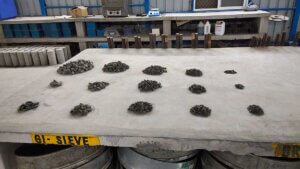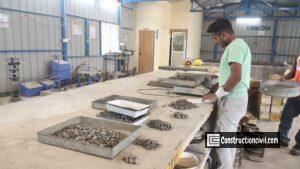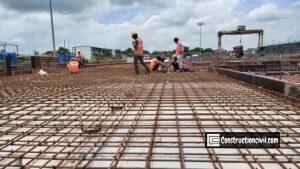Integrity test of Pile is a technique that can be used both on cast-in-situ and prefabricated piles, and it is a non-destructive type of testing to check the integrity of the pile shaft. PIT test of Pile is relatively quick and straightforward and enables several piles to be tested in a single working day.
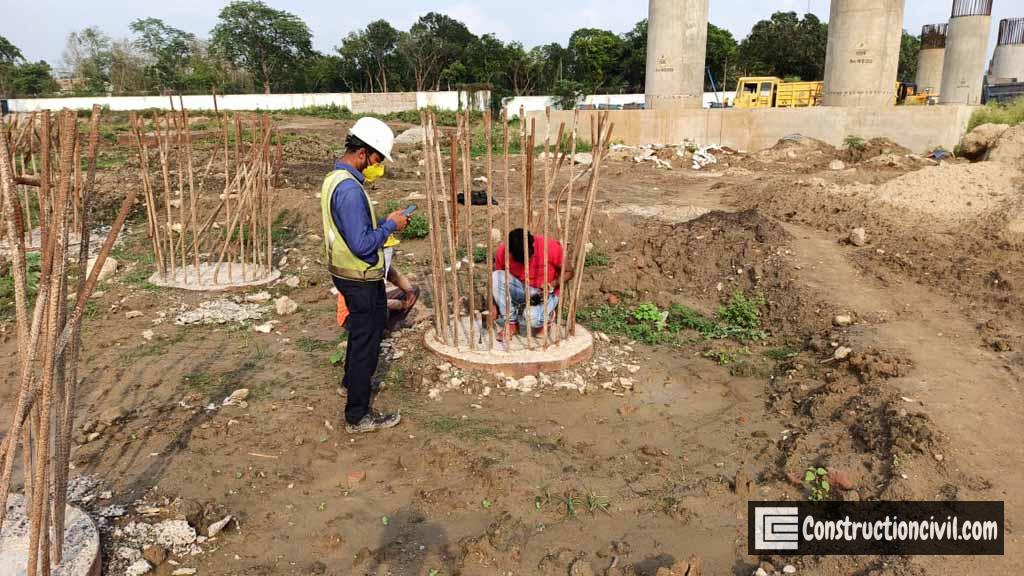
Purposes of Pile Integrity test (PIT):
- A successful pile foundation must construct the piles with sound quality, design dimensions and shape.
- The vertical load tests carried out on working piles do not provide direct information on the structural integrity of piles.
- It is true that all the piles can not be tested for vertical load test because of both economic and time constraints.
Also, Read: Vertical Pile Load Test Procedure – Kentledge Method
Equipment for Integrity Test of Pile:
- Pile integrity tester – built-in data acquisition facility, and it can convert data from analogue to digital form.
- Accelerometer acceleration sensor
- Non-Instrumented Hammer/Instrumented
- Petro wax for fixing Accelerometer
- Software: PIT-W-2009 or updated software is used for data analysis
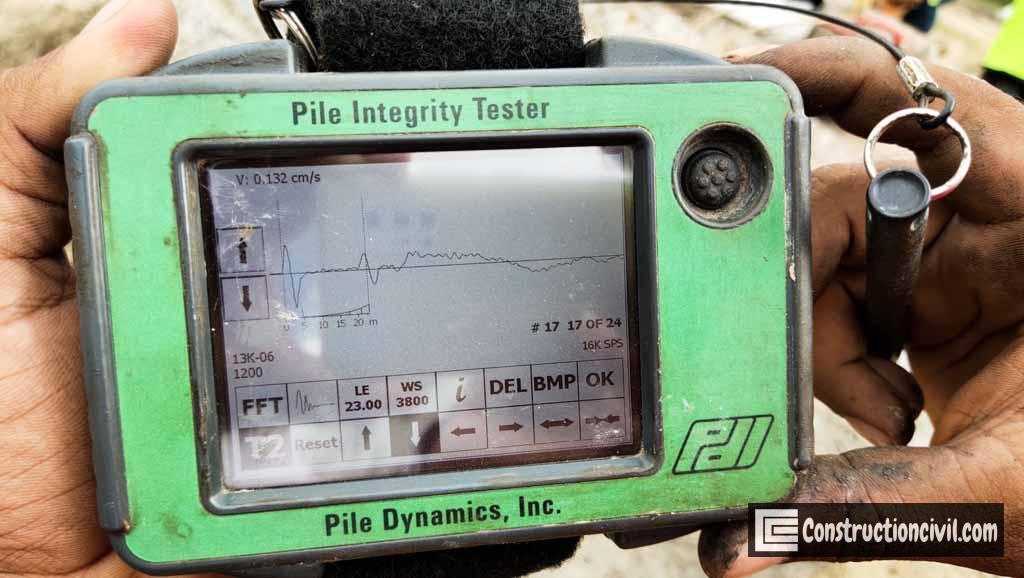
Pile Integrity Test Procedure:
- Before integrity test of pile, the pile head has to be made smoothen at a minimum of three locations of an equally divided quadrant of the entire pile circular cross-section for properly conducting PIT(Pile Integrity Test).
- The concrete of cast-in-situ piles should preferably be cured to at least 80% of its ultimate compressive strength.
- In general, this stage is reached after 7days of pile installation.
- All piles should be on Cut off level.
- It is significant for proper contact of the sensor for Integrity Test of Pile, i.e. “accelerometer”, and the contact of the handheld hammer with pile head to acquire the test data appropriately.
- Please take the photo of the prepared surface of the pile head and the test procedure every time before conducting the PIT.
- The gap between the point of impact of the hammer and sensor should be 300 mm in every quadrant/part of the pile cross-section.
- The hammer blow also is to be given perpendicular to the pile head or not in an inclined manner.
- The weight of the handheld hammer should be appropriate for the depth and size of the Pile. The weight of the hammer used in the test shall need to be mentioned in the report.
- The wave speed of the hammer impact should be appropriately selected depending upon the grade of concrete as well as the past experiences of the test. The agency should mention the wave speed in field test input.
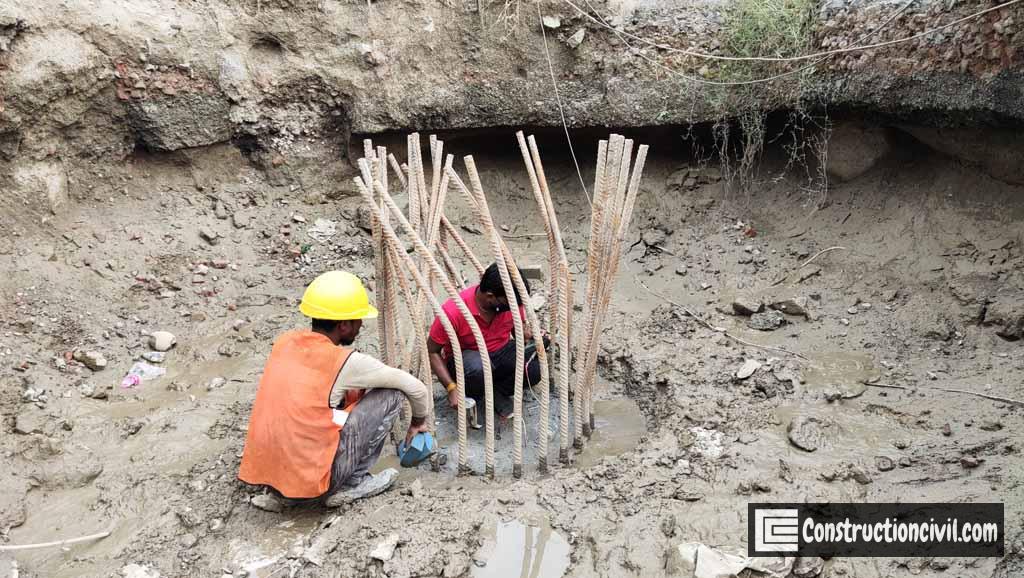
Also, Read: Dynamic Load Test on Piles – Objective, Procedure & Analysis
- A gentle hammer blow but not necessarily a hard one shall be applied on the pile head, which produces a compressive sonic wave of length between 2.0 m to 3.0m and speed 3500 to 4500 m/sec along the pile shaft.
- The wave will be reflected from the pile toe after travelling down and return up as a tensile wave along the entire length of the Pile.
- It is reflected if there is any change of impedance for a smooth cylindrical pile of uniform cross-section, density, and soil friction.
- A transducer/sensor is attached to the top of the pile head, designed to send signals through the hardware to generate a reflectogram of the wave time domain.
- It is possible to locate the depth of significant changes in the impedance of the test pile with the help of linear and exponential amplification technique and the in-built filtering system of the Pile integrity tester.
- The nature of the reflectogram gives us the length of the Pile, sudden changes in pile cross-section and discontinuity if any.
- The test result quality depends on good preparation of the pile head because weak concrete will produce a noisy reflectogram, which cannot produce good results.
- Availability of data on the actual condition of construction like the grade of concrete, if any problems faced during construction, consumption of concrete, etc., helps provide good quality results that should be the objective of the test.
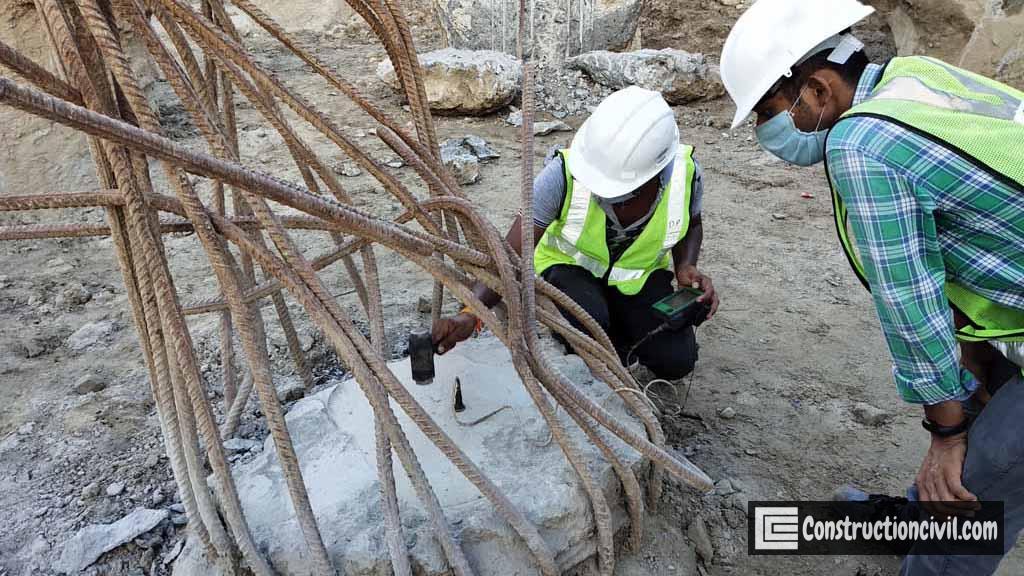
Also, Read: 4 Important Bentonite Test for Piling – Equipment & Procedure
Integrity Test of Pile: Interpretation of PIT Test Result
- The analysis of field data consists of evaluating response based on the reflected weaves recorded during field testing as described above. Reflections are generated due to changes in pile shaft shape, material, soil resistance, construction joints during casting etc.
- The most profound reflection generated at the Pile’s toe and its reflection are last observed. All such reflections are in acceleration form and are numerically integrated to velocity before being displayed.
- After impact, the integrity of the Pile was tested based on such reflections and detected changes in impedance (EA/c) along the pile length. E represents the pile material’s elastic modulus, A for the cross-sectional area of the test pile, and c for the wave speed.
- Impedance variation usually refers to a cross-sectional change and are also defined in ASTM D5882.
- Integrity test of pile test cannot identify the nature of the defect like necking, honeycombs, voids, soil inclusions, tremie choke as the wave reflects from a reduction in either elastic modulus or cross-section.
- However, all the scenarios are not acceptable. Hence, such piles are still classified as doubtful and may need further testing / remedial action/replacement /re-design based on their actual load-carrying capacity.
- In the case of integrity test for Pile, Bulbs are not categorised as defects. The curve after the toe response is a second cycle of the wave, which is moving through the pile shaft. If the impact energy is sufficient or for a shorter length pile, the wave can travel a few times along the pile shaft before eliminating. In contrast, in some cases, it only makes a partial second cycle.
- Generally, the waveform after the first cycle is irrelevant for the interpretation of the test result.
- The length is an essential input into the test system, which is used to compute wave speed. The typical range of wave speed for good and consistent concrete is 3500m/sec to 4200m/sec. Wave speed can be found from 3200m/sec to 3500m/sec for large jobs with lesser QC or piles having low reinforcement and from 3800m/sec to 4300m/sec for piles with permanent liners.
- Piles with a prominent bulb may reflect a reflection with a secondary reflection similar to a defect that should not be considered a defect.
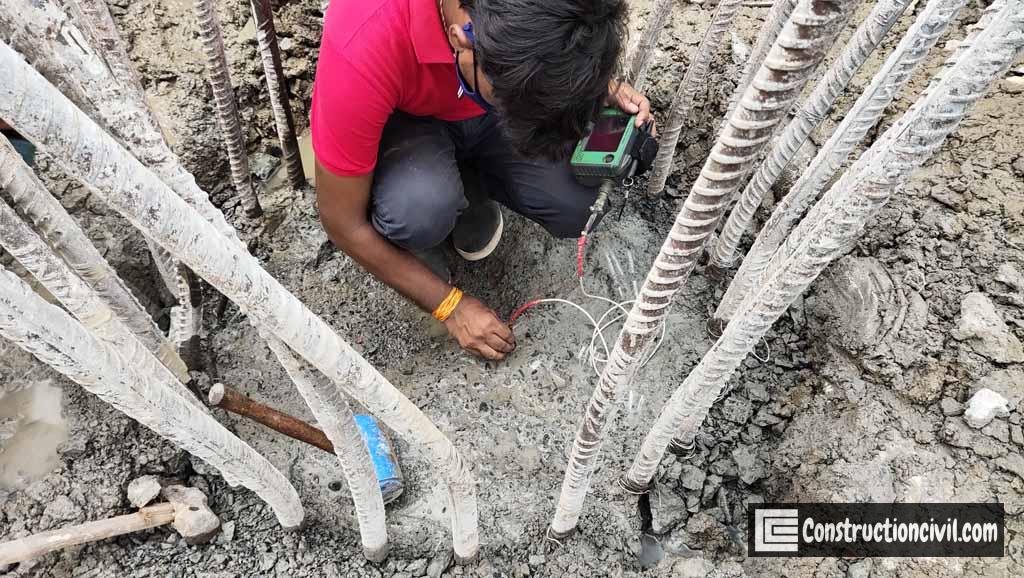
Also, Read: Bentonite Uses in Piling – Bentonite Slurry Preparation and Recycling
Integrity Test of Pile – Limitations :
- Integrity test of pile cannot provide the load-carrying capacity of the pile.
- The method does not evaluate minor defects like local loss of cover, small intrusions or type of conditions of materials at the base of piles and multiple defects inside the built-up pile shaft. Furthermore, the sonic wave generally reflects from the first significant defect.
- It may be hard to evaluate the pile integrity beyond a significant bulge, mechanical joints or entire section cracks, and in such circumstances, the pile integrity is likely inconclusive.
- Integrity test of Pile can be used to evaluate the length of pile shaft; received pile length is approximate within a range of ± 5 to 10% due to change in built-up concrete density.
- The PIT test method cannot evaluate defects present in the bottom 5% to 10% of the pile shaft.
- The PIT test for Pile can generally evaluate up to an L/D ratio of 45 to 50. Nevertheless, this also depends on the soil resistance that may attenuate the signals and thus is a general type of statement.
- Highly non-uniform piles create complex records which are very hard to analyse.
- For Integrity test of pile, requires a trained and experienced engineer for interpretation of the PIT test results after analysing the field data obtained from Integrity Test of Pile.
Also, Read: Lateral Load Test Pile – General Arrangement & Procedure
Summary
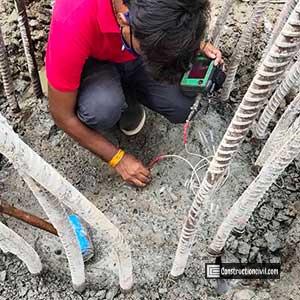
Article Name
Integrity Test of Pile - Purposes, Procedure & Limitations
DescriptionIntegrity test of Pile is a technique that can be used both on cast-in-situ and prefabricated piles, and it is a non-destructive type of testing to check the integrity of the pile shaft. PIT test of Pile is relatively quick and straightforward and enables several piles to be tested in a single working day.
Author
WhiteHelmet
Publisher Name
Construction Civil
Publisher Logo


